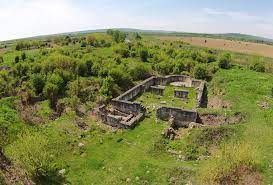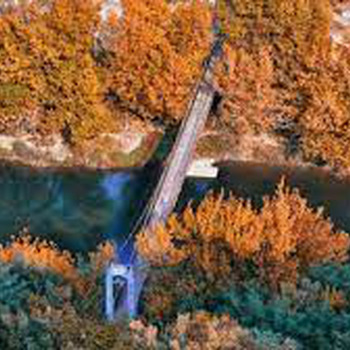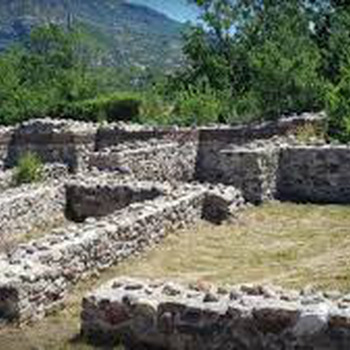Ancient and medieval village Yatrus
Overview
Yatrus or Yatra - ancient name of the Yantra River. Yatrus is a deity from Thracian mythology, about whom we do not know much, except that he kept some elements in subjection. According to a newer theory, Yantra is a word of Eastern origin: a mystical figure representing complex movements in nature. A Roman and early Byzantine town of the same name existed at the mouth of the Yantra near the present-day village of Krivina, Ruse region. It lasted until the 7th century, collapsing under the blows of the Slavs, Avars and Proto-Bulgarians coming from the north-northeast. There is an old Bulgarian settlement on its ruins in the 8th - 13th century. Yatrus occupied an area of about 3 hectares. It was protected by a massive stone wall with towers protruding. In 1958 the eastern gate, public and private buildings, 2 early Christian basilicas and others were opened. Iron swords, pottery, 10th century gold coins, iron tools and more were found. The name Yatrus is found in Roman road maps from the 3rd century. There Yatrus is marked as a road station located on the main military road connecting Singidunum (now Belgrade) with the Danube Delta. In the Peutinger Map, Yatrus is placed 9 Roman miles from Nove (near the present-day town of Svishtov) and 16 miles from Trimamium (near the village of Mechka). Karel Shkorpil was the first to identify the ruins of the present-day village of Krivina with the Roman Yatrus. Localization is confirmed by long-term Bulgarian-German archaeological research. Thanks to them, Yatrus became the best-studied Late Roman military camp in present-day Bulgaria. The existence of an earlier settlement, a predecessor of the late Roman fortress, has also been established. The settlement functioned together with the road station in the II-III century and probably played a role in the border defense of the empire. In 270-275, under pressure from barbarian tribes advancing from the north and northeast, the Romans were forced to leave the province of Dacia, located north of the Danube. Thus the lower reaches of the river became again an imperial frontier. For its effective protection, the Roman emperors organized large-scale construction of fortresses. It was especially intense in the first quarter of the 4th century - during the reign of Emperor Constantine I (306-337). At that time on the right bank of the Yantra River, at its mouth, a military camp was built - a castle, named after the ancient name of the river - Yatrus. Yatrus Castle is located on a small hill rising above the swampy mouth of the Yantra River. The place is naturally protected by steep slopes from the north and northeast. The fortress follows the outlines of the hill, which determines its irregular shape. The width of the fortress wall in the individual sectors is 3 - 3.50 m, and the presumed height was 10 m. On the outside of the wall are located 10 strongly protruding, massive U-shaped towers. Two of them defend the only gate of the castle. The core of the fortification system of Yatrus is a large rectangular tower, which in its impressive size (30.50 x 15.30 m) is unparalleled among the monuments of Roman military construction in today's Bulgarian lands. Recent archaeological research shows that in this form the military camp Yatrus lasted until the 70s of the IV century. After the battle of Hadrianopolis (now Edirne) in 378, in which the Roman emperor Valens died, an accelerated process began. the collapse of the late Roman model of military organization, in which existing military camps were gradually transformed into fortified civilian settlements. This process is well seen in the castle Yatrus. After a devastating fire, purely military buildings were abandoned. In their place are formed smaller and inferior as a construction technique buildings, whose inhabitants - probably Gothic federations, are the population engaged in agriculture. These complexes have living, storage and working premises in which a variety of tools and craft equipment are found. Individual finds, such as armaments and imported amphorae, indicate the existence of centralized supplies. Yatrus continues to be a unit of the All-Imperial Border Defense, and its inhabitants also perform military tasks during enemy attacks. Only after the devastating Hun invasions of the second quarter of the 5th century did the process of its transformation from a military camp into a civilian settlement come to an end.
Recommended
- The bridge of Kolyo Ficheto, town of Byala
- Panoramic square Leventa Ruse
- Tsarev Kamak Ruse
- Ruse Regional History Museum
- Red Fortress
- Svoboda Square - Ruse
- Revival Park-Ruse


 Bulgarian
Bulgarian Romanian
Romanian


